Programming Language Assignment: Core Concepts and Applications
VerifiedAdded on 2022/09/09
|7
|889
|19
Homework Assignment
AI Summary
This document provides solutions to a programming language assignment, addressing key concepts such as logical AND operators, debuggers, data types (integer, float, boolean), functions, and parameter passing (pass by value and pass by reference). The solution explains the purpose and usage of the logical AND operator, the functionality of a debugger, and the differences between various data types. It further elaborates on the concept of functions, including their features and types, and demonstrates the use of parameters with examples of pass by value and pass by reference. The assignment also includes references to supporting literature. This assignment is intended to help students understand and apply core programming language principles.
1 out of 7
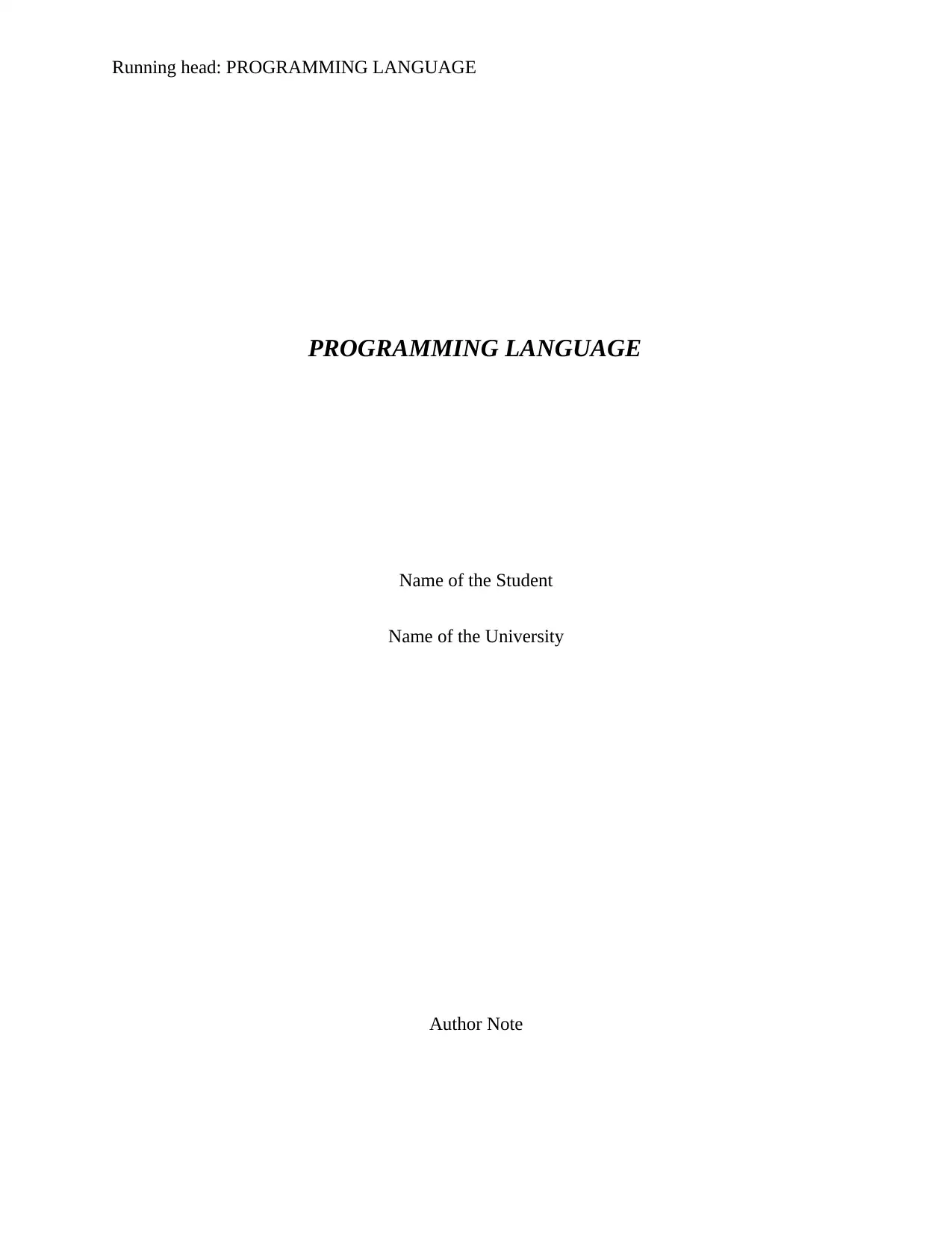
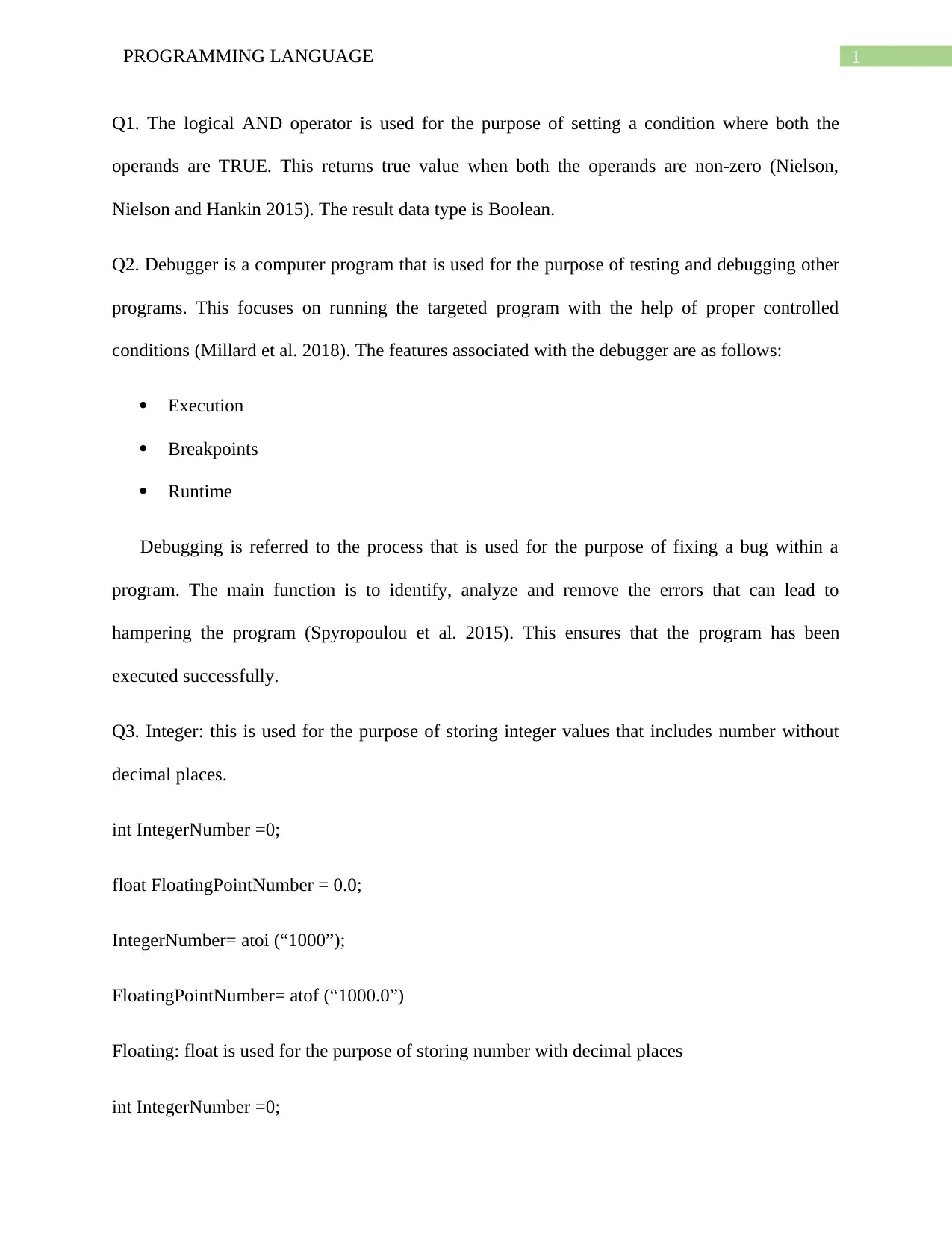
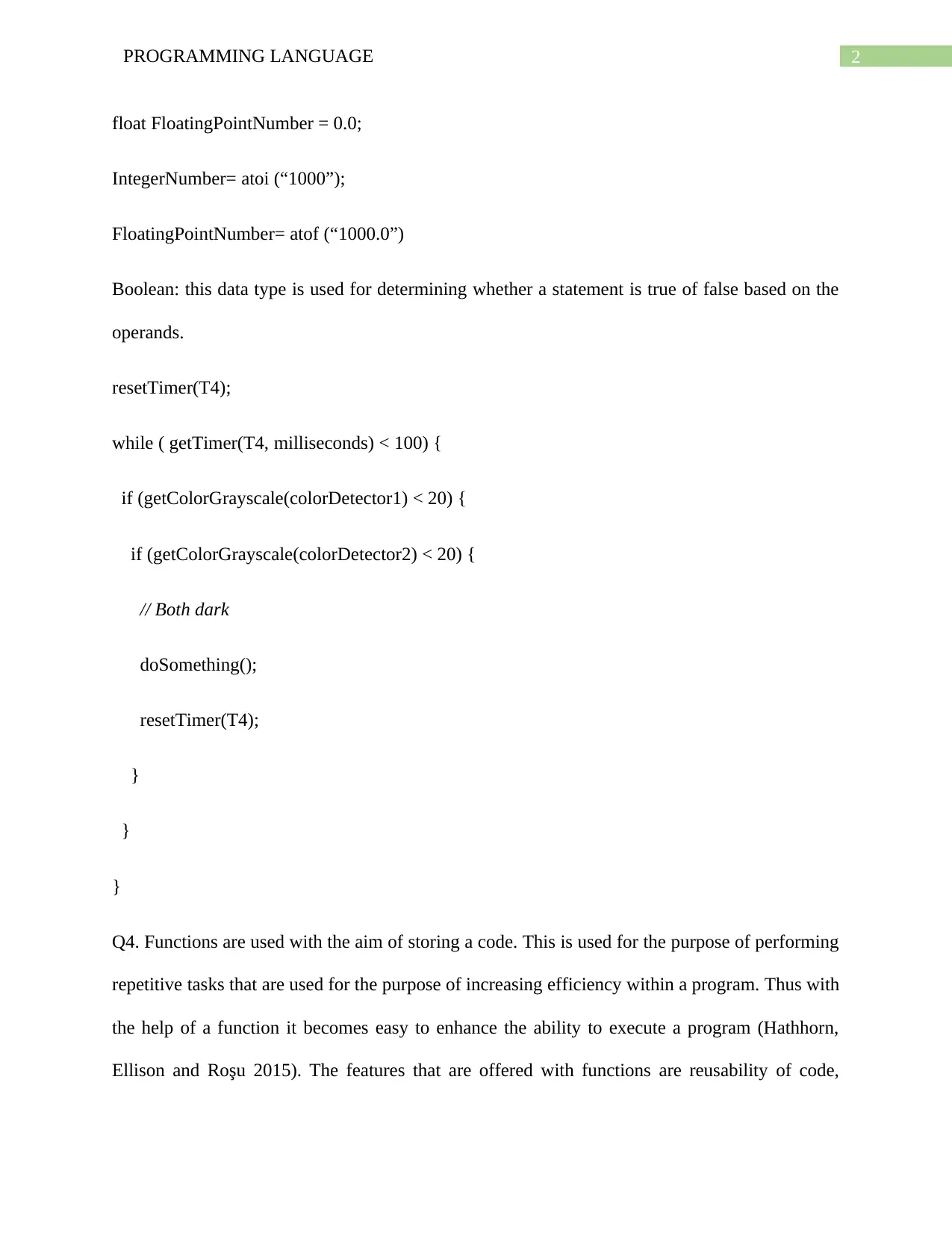

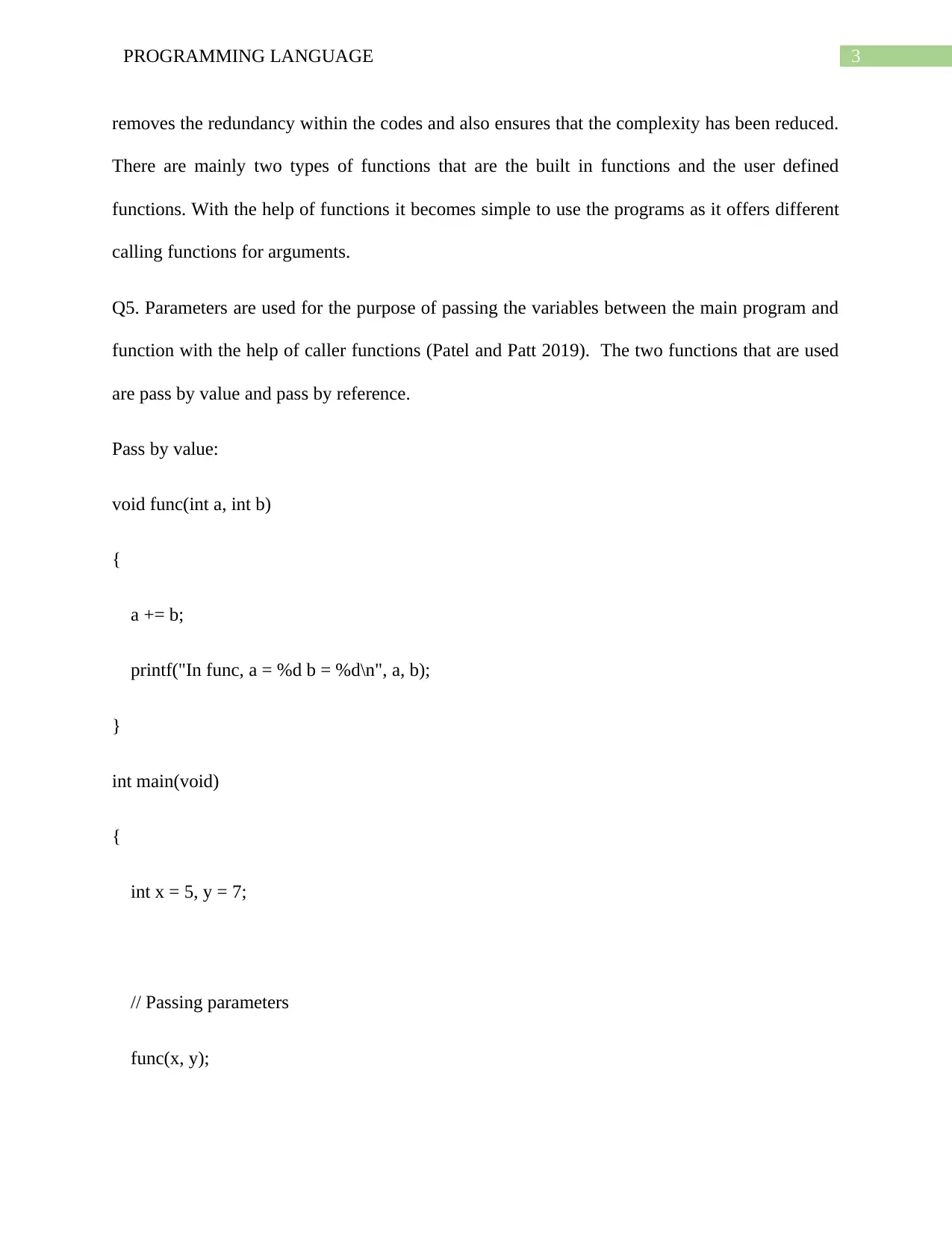
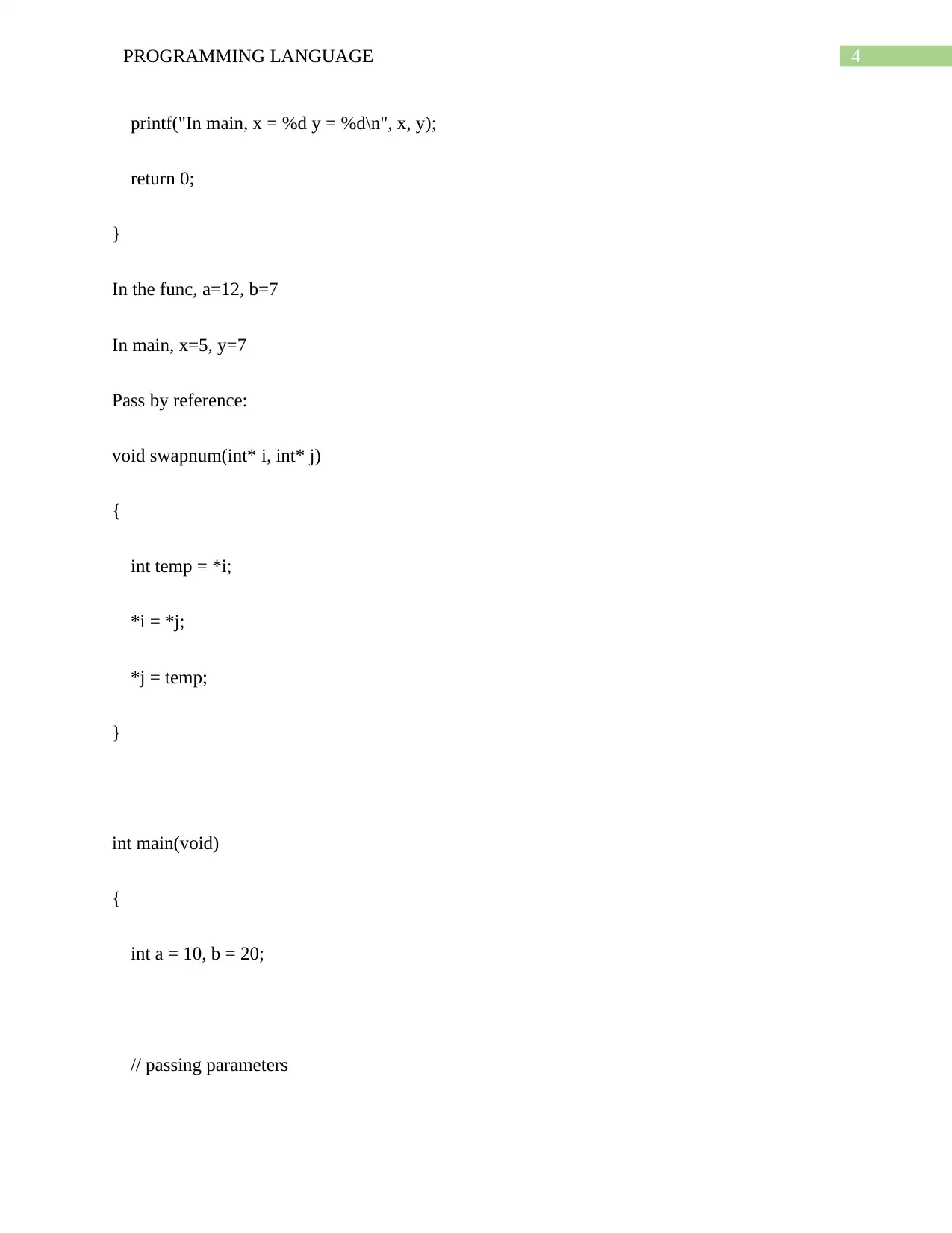
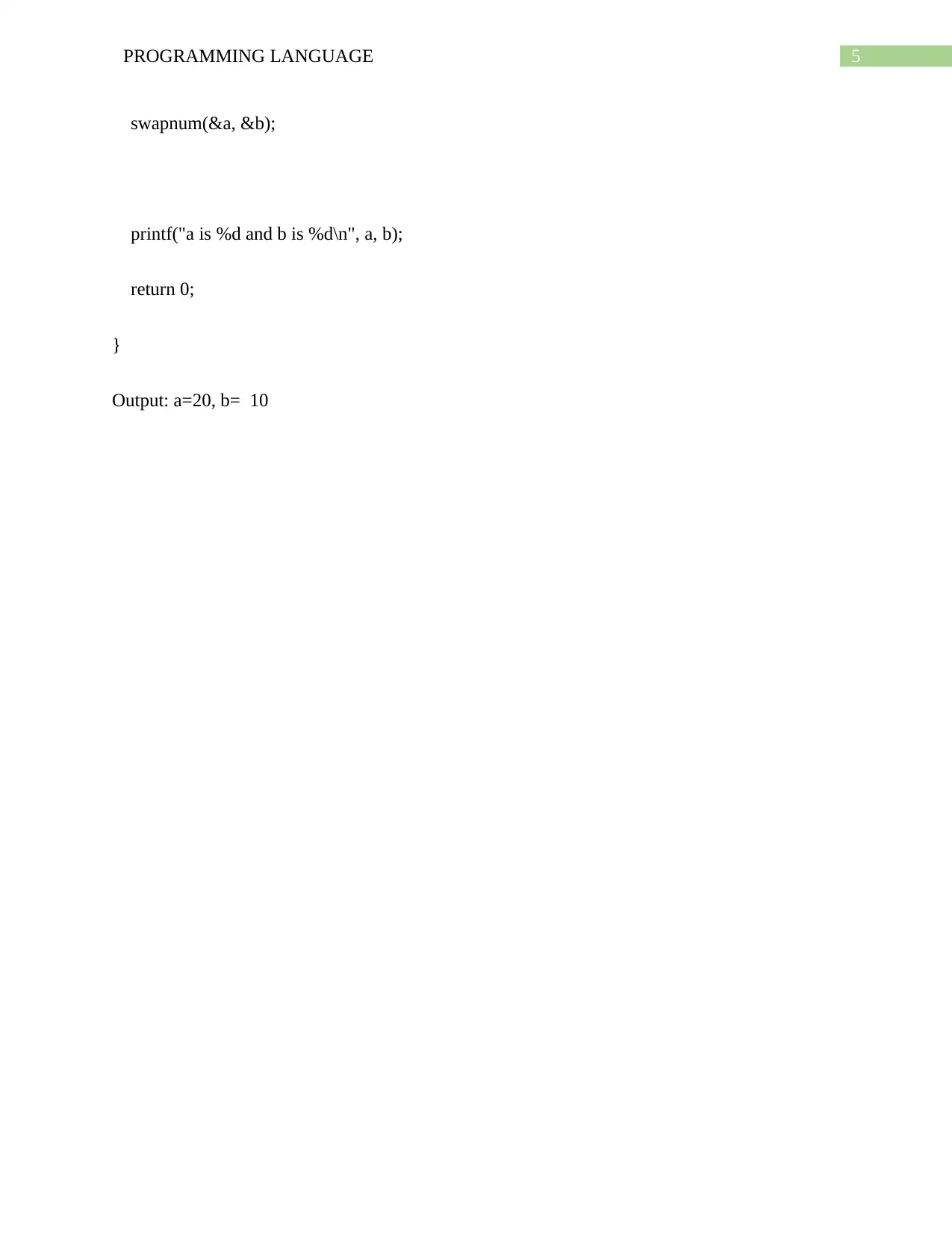
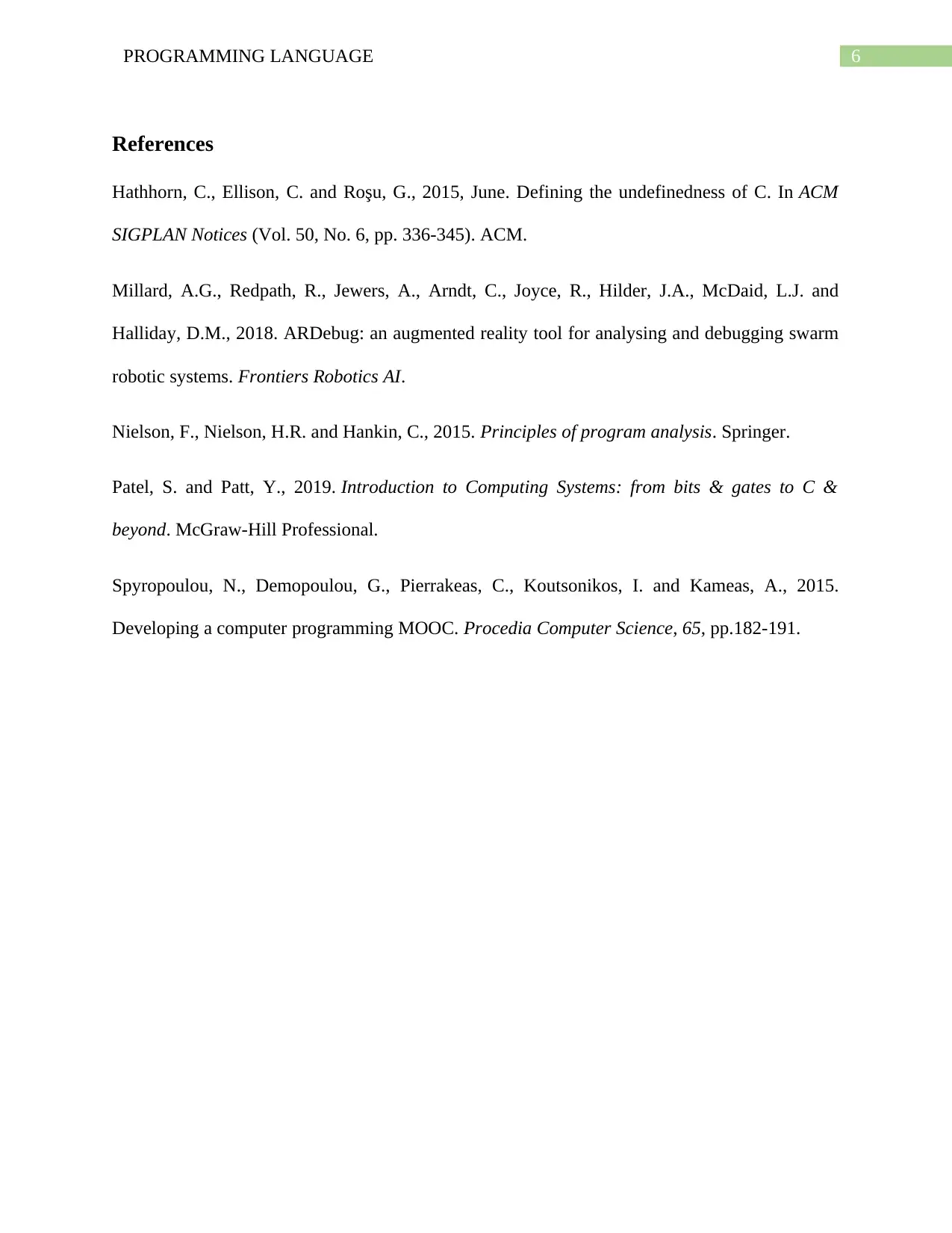
![[object Object]](/_next/static/media/star-bottom.7253800d.svg)